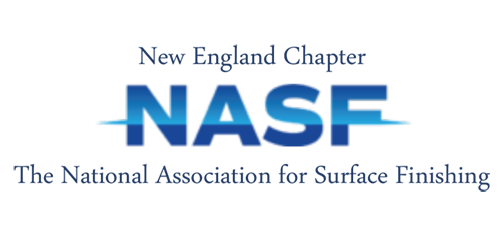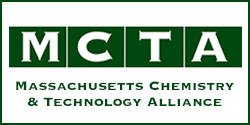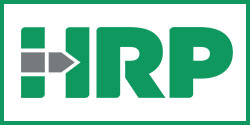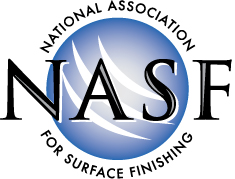NASF POLICY UPDATE – JANUARY 2025
|
|

info@nenasf.org
508-754-2671
|
|
|
|
||||
|
||||
|
||||
|
|
|

On September 18, 2024 the New England Chapter of NASF hosted their annual Fall Webinar for the benefit of their membership and the entire non-NENASF metal finishing community. This year’s event featured a cross section of varied technical presentations designed to enhance and broaden the knowledge of Wastewater Professionals as well as all interested members of the metal finishing community. The event was presented free of charge to NENASF members, and at a modest fee for other interested parties, as an educational and bonding opportunity for the metal finishing community.
The Webinar was conducted by means of Zoom format and attracted about three dozen attendees. It consisted of three segments featuring three presenters over a two-hour period from 10:00am to 12:00 pm offering a user-friendly Zoom format for all attendees. In addition to offering vital regulatory and technical information the event also made available two Continuing Education Wastewater Treatment Operator Contact Hours needed for WWT Operator License renewal.
Fernando Carminholi from Hubbard-Hall opened the Webinar with a presentation on Membrane Filtration for a Cleaner and More Sustainable Future. His presentation showed factual technical data on the use of microfiltration as a means of removing saturated oil from cleaning solutions, thus adding to the life of the cleaning solution resulting in chemical make-up cost savings and disposal cost savings, thus reducing the impact to the environment with beneficial cost savings to the company. Fernando offered case studies that resulted in 35 to 45 % cost savings using membrane filtration over a multi-year period.
This was followed by a presentation by Brian Morrill, vice president of GZA GeoEnvironmental giving a detailed update on the rapidly evolving PFAS discharge regulation front. The EPA has already issued regulations on PFAS in public drinking water supplies, and wastewater discharge PFAS limit regulations are being mandated in the near future. The EPA is using the data accumulated by the comprehensive PFAS Survey that most metal finishers completed in early 2024 as a basis for promulgating PFAS discharge limits for our industry.
The webinar was concluded with a presentation by James Mitchell, R & D Associate chemist for PAVCO, who spoke on the use of inert Ion-Exchange Membrane Anodes used in acid zinc and zinc-nickel solutions as a means of minimizing metal growth in bathes thus offering cost and environmental savings resulting from not having to “cut” and dispose of plating solutions over time.
Once again, we want to give special thanks to Chris Capalbo, moderator, all the member of the NENASF who contributed to this successful Program, and a special thanks to the talented speakers who offered their time and talent to make this presentation come to fruition for the benefit of the Metal Finishing Community.

|


The New England Chapter of the NASF was pleased once again to offer a Seminar for the benefit of its members, and the metal finishing community, featuring annual mandatory RCRA training as well as environmental updates on hot button issues impacting the metal finishers. This year, for the first time, the Seminar was offered free of charge to all New England Chapter members in good standing as an extra membership benefit and a means of thanking loyal members for their support of NASF ideals at both the local and national level. The event took place on May 15, 2024 at the Courtyard Marriott in Marlborough Massachusetts.
The more than thirty-five attendees first received their mandatory RCRA training by Jorge Bejarano of HRP Associates. This training is a requirement for all personnel who are responsible for hazardous chemicals and waste handling, storing and offering for transportation. Jorge gave a fast paced and thorough presentation covering all aspects of safe and proper hazardous chemical handling.
The second segment of the Seminar was dedicated to Environmental Issues. Three speakers who were present from the Department of Energy & Environmental Affairs, along with one via video link, offered an enlightening look into the newly emerging Environmental Justice initiatives which involve community interaction between industry and residents of communities that are disproportionately impacted by industrial pollutants. This was followed by a presentation by MCTA Executive Director Katherine Robertson who gave insight into the legislative activities on Capitol Hill in Boston with special emphasis on updating TURA activities and potential industry impact. The closing speaker was Brian Morrill, Associate Principal and Vice President of GZA GeoEnvironmental, informing attendees about the latest PFAS regulatory happenings that could have future impact on the Metal Finishing Community.
This well attended event is another way that membership in the NASF, at both the Local and National level, can benefit metal finishers at all levels. Once again, thank you to all NENASF Board Members, NENASF membership as a whole, and talented members of the Metal Finishing Community for offering their time and talent to making beneficial events like this a reality.

The New England Chapter of NASF was, once again, pleased to host a virtual Wastewater Continuing Education Webinar for the benefit of our membership and the entire metal finishing community. This event was offered via Zoom format, at no charge to NENASF members, over a two-hour period from 10:00 am to 12:00 pm on Wednesday March 20, 2024.
The program, comprised of three speakers, offered vital technical and regulatory compliance information to the metal finishing community. Attendees also qualified for two Continuing Education Wastewater Treatment Contact Hours to be used towards Wastewater license renewal.
Frank DeSilva of Resin Tech opened the Webinar with an update on the current status of the very hot button PFAS issue and regulatory efforts by the EPA. After giving us some very helpful facts, he then offered remediation techniques and technologies for successful PFAS removal from waste streams.
This presentation was followed by one from Mark Schario of Columbia Chemicals who enlightened attendees with a history of Trivalent Chrome plating baths and how they have greatly improved in appearance and durability over the last three or four decades. The substitution of Hex Chrome plating baths with trivalent baths is a very timely presentation given the TSCA chemical banning frenzy that is taking place across all chemical user and manufacturer sectors, especially in the metal finishing community.
The closing speaker was Dave Calnan of CCI-A Chemicals offering practical solutions and techniques for, and benefits of, oxidizing wastewater prior to reduction and precipitation.
Special thanks, once again, to Chris Capalbo, Dev Massimi and Ralph Capalbo as Program Moderators and Speaker Facilitators for their contributions, and to the combined efforts of NASF Board Members, Committee Members, Chapter Membership and dedicated and talented members of the Metal Finishing Community as a whole for making events such as this available for the benefit of our membership. Over thirty members of the NENASF and metal finishing community were in attendance and benefited from this program.

|
|

RCRA Hazardous Waste ManagementDOT Hazardous Materials Transportation / IATA (Air) / IMDG (Vessel)
EHS Management Systems / ISO 14001:2015 / OHSAS 18001:2007
OSHA Health and Safety
8-Hour HAZWOPER Refresher
Asbestos AwarenessProcess Safety Management
Brownfields Opportunities / Environmental Due Diligence
Environmental Compliance Overview
Spill (SPCC) and Stormwater (SWPPP)
Company specific EHS Training
UST A/B Operator Training

Please see more details on these topics below:
NASF Action Ahead on Major EPA Regulatory Push in 2024
With a wide-ranging regulatory agenda set in December 2023 and funds still in the pipeline from Biden initiatives passed by Congress, EPA this year will be rushing to meet deadlines to complete far-reaching regulations and distribute billions of dollars by the end of 2024. The agency is working to implement protections on air, climate, and water by late summer before they may be in danger of reversal next year should Republicans win back full control of Congress and the White House.
EPA Deputy Administrator Janet McCabe noted the agency’s work is “hard, tiring, and rewarding” in a widely-circulated note to EPA staff, and advised that “2024 is also going to be a big year for our regulatory programs – from rules that address climate pollution, to those that protect our precious rivers, lakes coastlines, and wetlands, to those that ensure the air we breathe, the water we drink, and the land we rely upon is safe and healthy. I want each rule writer, regulatory development team member, economist, scientist, biologist, and public health officer to know that Administrator Regan and I have got your back as you make your way through your work this year. We have an important job to do, and I am confident that together we will deliver.”
The finishing industry could be subject to new regulatory burdens and future liability exceeding a billion dollars if EPA finalized some of its most significant rulemakings, including:
NASF will continue working with EPA officials on these and other policy decisions and providing members with critical updates in the coming year. If you have any questions or would like more information, please contact Jeff Hannapel or Christian Richter with NASF at jhannapel@thepolicygroup.com or crichter@thepolicygroup.com.
NASF Government Affairs Webinars: Providing Guidance to Members on EPA’s Survey for the PFAS Wastewater Discharge Rule
Since late December, finishing facilities across the nation began receiving federal EPA’s industry survey that will inform the agency’s surface finishing PFAS wastewater discharge rule. The survey includes an extensive set of information requests regarding facility operations and processes, facility uses of PFAS, PFAS discharge data, water discharge permits, and company financial information. The submission of accurate responses to the survey that are representative of the industry will be critical, as the information from the survey will help to shape the rule to address – in some form – PFAS wastewater discharges from finishing.On January 15, NASF held a webinar for members to provide some guidance on responding to the survey. The program prompted wide participation from association members across the country. The guidance included, among other topics:
In addition, The Policy Group answered questions from participants as part of the webinar and in the days following. The webinar is available on the NASF website in the members-only area.
NASF is planning some additional webinars on the survey and details regarding the upcoming webinars will be provided soon. If you have any questions or would like additional information on the survey, the new wastewater discharge rule for PFAS, or upcoming webinars on the survey, please contact Jeff Hannapel or Christian Richter with NASF at jhannapel@thepolicygroup.com or cichter@thepolicygroup.com.
Pentagon Proposes Cybersecurity Maturity Model Certification (CMMC) Program Rule: NASF Review Underway
The Cybersecurity Maturity Model Certification (CMMC) Program is the Department of Defense’s (DOD) process of ensuring that contractors are adequately protecting sensitive information under DOD contracts. It requires DOD contractors to certify that they are compliant with cybersecurity requirements for protecting sensitive information. DOD has been making efforts to increase cybersecurity protections, including when it announced in November 2021 “CMMC 2.0” that established a program structure with three key factors: 1) tiered levels of security, 2) assessment requirements, and 3) implementation through contracts.
A proposed rule published in the Federal Register on December 26, 2023 establishes a revamped CMMC 2.0 program and defines requirements for the program and for each CMMC level. Surface finishing operations conducting business with DOD and its contractors have been in the process of implementing CMMC requirements at significant cost for some and will be impacted by this rule.
A copy of the proposed rule is available at the following link: https://www.federalregister.gov/documents/2023/12/26/2023-27280/cybersecurity-maturity-model-certification-cmmc-program.
Tier LevelsThe proposed rule preserves the three tier levels that were introduced in CMMC 2.0.
AssessmentsThe proposed rule includes a mixture of self-assessments and third-party assessments depending on the nature of the data.
Certifications and Plan of Action and Milestones (POA&M)An assessment may result in a Final Certification or a Conditional Certification, depending on whether the contractor has implemented all of the required security controls. The proposed rule allows for some flexibility with the limited use of a Plan of Action and Milestones (POA&M) for certain requirements and for a limited time where some controls are not yet implemented.
For example, POA&Ms are not permitted for Level 1 assessments but can be used for some Level 2 and 3 assessments. If a POA&M exists after an assessment, the contractor will be granted a Conditional Certification and have 180 days to fully implement all of the security controls listed in the POA&M. Failure to implement the security controls in the POA&M will result in penalties or loss of the DOD contract.
Implementation TimelineThe proposed rule includes a four-phase implementation plan.
Comment Deadline and Preparing for the RuleComments on the proposed rule are due on February 26, 2024. NASF will continue to review and evaluate the proposed rule and plans to submit comments. Because the final rule is not expected to look dramatically different from the proposed rule, surface finishing operations subject to these requirements should consider continuing their efforts toward full compliance with the CMMC requirements.
If you have any questions or would like more information regarding the CMMC proposed rule or compliance efforts, please contact Jeff Hannapel or Christian Richter with NASF at jhannapel@thepolicygroup.com or crichter@thepolicygroup.com.
EPA Issues More Stringent Guidance for Soil Cleanup Screening Levels: Potential Impacts Ahead for Certain Surface Finishing Operations
EPA issued new guidance on recommended screening levels for cleaning up lead-contaminated soil at federal Superfund cleanup sites and Resource Conservation and Recovery Act (RCRA) corrective action facilities. Specifically, EPA lowered the screening level for lead in soil at residential properties from 400 parts per million (ppm) to 200 ppm.
For remedial actions, if there are other sources of lead exposure, such as lead in air and water, EPA recommends screening level as 100 ppm. EPA notes that the guidance’s new thresholds should apply to both existing and new sites. This action is expected to drive evaluation and cleanup at a “significant number” of residential properties.
The new screening levels could drive investigation and/or cleanup at hundreds of thousands of new parcels. EPA’s Office of Superfund Remediation and Technology Innovation estimate that this could result in approximately 500,000 parcels (an order of magnitude estimate) needing investigation and/or cleanup.
New Screening Level to Drive More Stringent Cleanup Levels at More Sites
In the new guidance the agency emphasizes that screening levels are not cleanup levels, and are used in the early stages of investigating a release to determine if the level of contamination is high enough to warrant further investigation. Nonetheless, the new screening level will drive substantially more stringent cleanup levels at significantly more sites.
EPA requests that its own regional office work collaboratively with state, tribal, and public health agencies to prioritize addressing sites, considering factors such as current levels of exposure and communities with increased risk. Consistent with national policy, EPA will make resource decisions for residential lead sites in a manner that balances resources across all Superfund sites. Because many of the communities at highest risk are in urban areas, it could have an impact on all industry sectors, including surface finishing operations.
NASF will continue to monitor this issue and its potential impacts on the surface finishing industry. If you have any questions or would like more information, please contact Jeff Hannapel or Christian Richter with NASF at jhannapel@thepolicygroup.com or crichter@thepolicygroup.com.
NASF 1000
The NASF 1000 program was established to ensure that the surface finishing industry would have resources to effectively address regulatory, legislative and legal actions impacting the industry, NASF members and their workplaces. All funds from the NASF 1000 program are used exclusively to support specific projects and initiatives that fall outside the association’s day-to-day public policy activities. The commitment to this program is one of the most vital contributions made in support of surface finishing and directly shapes the future of the industry.
The sustained commitment from industry leaders has helped the NASF remain strong and credible in informing regulatory decisions across the nation. Specific projects funded through the NASF 1000 make a measurable difference in how the industry navigates emerging challenges, communicates credibly with policy makers, and advocates for a strong science base for rules or standards that affect surface finishing.
Please consider supporting the NASF 1000 program. If you have any questions or would like additional information regarding the NASF 1000 program or the broad array of NASF public policy activities, please contact Jeff Hannapel with NASF at jhannapel@thepolicygroup.com.